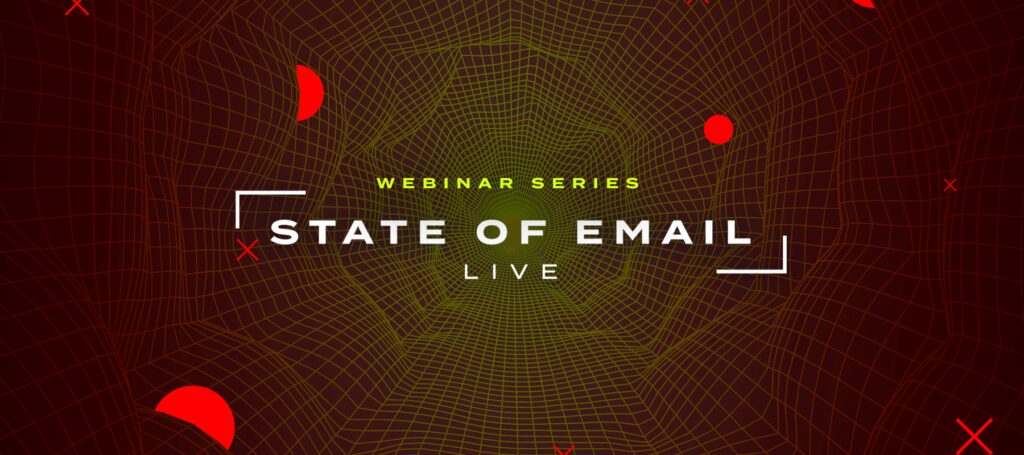Email celebrates its 50th birthday in October! Ray Tomlinson is widely acknowledged as the godfather of email, sending the first message way back in 1971, followed seven years later by Gary Thuerk who “hijacked” this largely government/military tool to send the first email marketing campaign. The rest, as they say, is history!
In saying “many happy returns”, we’re not just acknowledging a milestone. Email consistently ranks as the most effective channel for marketing return on investment (ROI), underpinned by relevance and high levels of consumer trust.
ROI literacy is essential – we often talk about “selling to power” where the primary issues are driving growth, competitive differentiation, and increased shareholder value. Establishing value means using a different language: economic value-add, payback period . . . and ROI.
But calculating ROI isn’t easy, and this hurts when you need to demonstrate program value to secure budget and new investment. In our most recent episode of State of Email Live, we reviewed this important topic.
Benchmarks: ROI, budgets, and key challenges
Each year, the Data & Marketing Association (DMA) produces a definitive set of ROI benchmarks. The 2021 edition of the Marketer Email Tracker report, sponsored by Validity, contains good news:
- Despite the many challenges posed by the pandemic, email ROI has grown to a healthy 38:1 – an 8.2% year-on-year increase.
- Because subscribers respond to offers through multiple channels, attribution is complex and it’s impressive that 71% of marketers can confidently calculate their email ROI.
- Of course, it means 29% can’t calculate ROI, and this increases sharply for less senior roles and for those working at smaller businesses.
- Email’s ROI effectiveness is reflected in spending plans, with average email budget as a percentage of total marketing budget now over 20% for the first time.
Securing budget and resources remains a major email challenge at precisely the same time fresh investment in data and technology is most needed. While pandemic spending on email increased as businesses diverted resources from other channels, securing new investment remains tough, especially for program owners who struggle to prove their ROI.
A sender’s perspective: ROI measurement & benefits
We were delighted to welcome Melissa Dallek, Customer Contact Strategy Manager at Walgreens, who shared thought-provoking insights around the importance of ROI for their email program:
- One challenge with email ROI is the channel is so highly cost effective. You’d have to be really bad to generate negative ROI, and it’s easy for key stakeholders to take that effectiveness for granted.
- Attribution challenges arise from customers responding through multiple routes/channels (not just clicks). Walgreens calculates ROI at a database level, using control groups to establish revenue effectiveness and providing granular reporting at campaign level.
- It’s important to consider a broader set of metrics that complement ROI. Identifying whether subscribers are acting on the primary call-to-action, responding to specific areas of interest (e.g. Covid vaccinations or gamification effectiveness), and knowing how much additional revenue is added from ongoing optimisation are all crucial reporting elements.
- Proving effectiveness is definitely helpful for securing additional budget. There’s no harm in being able to demonstrate a serious revenue contribution. Walgreens has recently made a big investment in mass personalisation, underpinned by strong confidence in a healthy payback.
- We were delighted Melissa confirmed her spend with Validity is highly ROI positive – not just from best-in-class deliverability (although that’s important!), but also from significant process efficiencies like automated reporting and comprehensive industry research.
Connecting the ROI dots: Validity’s solutions
For Validity, delivering positive ROI to our customers is crucial. We regularly talk about our philosophy of “trust your data”, and this also extends to trusting the solutions generating the data. We regularly work with clients to help them measure their effectiveness, and doing so objectively is important. To help further sharpen our ROI story, we retained Hobson & Company to create a new set of ROI tools and processes. As part of their discovery process, Tammy Klein from Hobson interviewed a broad cross-section of Validity for Email users and identified their biggest challenges:
- Ensuring emails are reaching subscribers’ inboxes.
- Increasing the proportion of emails with which recipients actually engage.
- Reducing the time required to plan, execute, and monitor email programs.
She then explored how they use Validity’s Everest email success platform to address these challenges and how they quantify the benefits, identifying five dimensions:
- Average deliverability rates increase from a 70-80% range to a mid-high 90% range.
- Open rates and click rates could increase by 10-25%.
- View Time Optimization improves open and click rates anywhere from 30-150%.
- Administrative tasks reduce by as much as 60-75%.
- Elimination of point solutions and/or contracted services saves an average $5K-$10K per solution/service.
Tammy calculated that for an email program sending 20 million messages per month, achieving these benefits will deliver an additional $1 million in revenue over a three-year period.
If you would you like to hear more from our wide-ranging ROI conversation, the webinar recording is available below. Hobson has also written an excellent white paper on the topic, which you’ll find here. Finally, to learn more about how Everest can help move the needle for your email program’s ROI, reach out to us here to set up a demo today.
